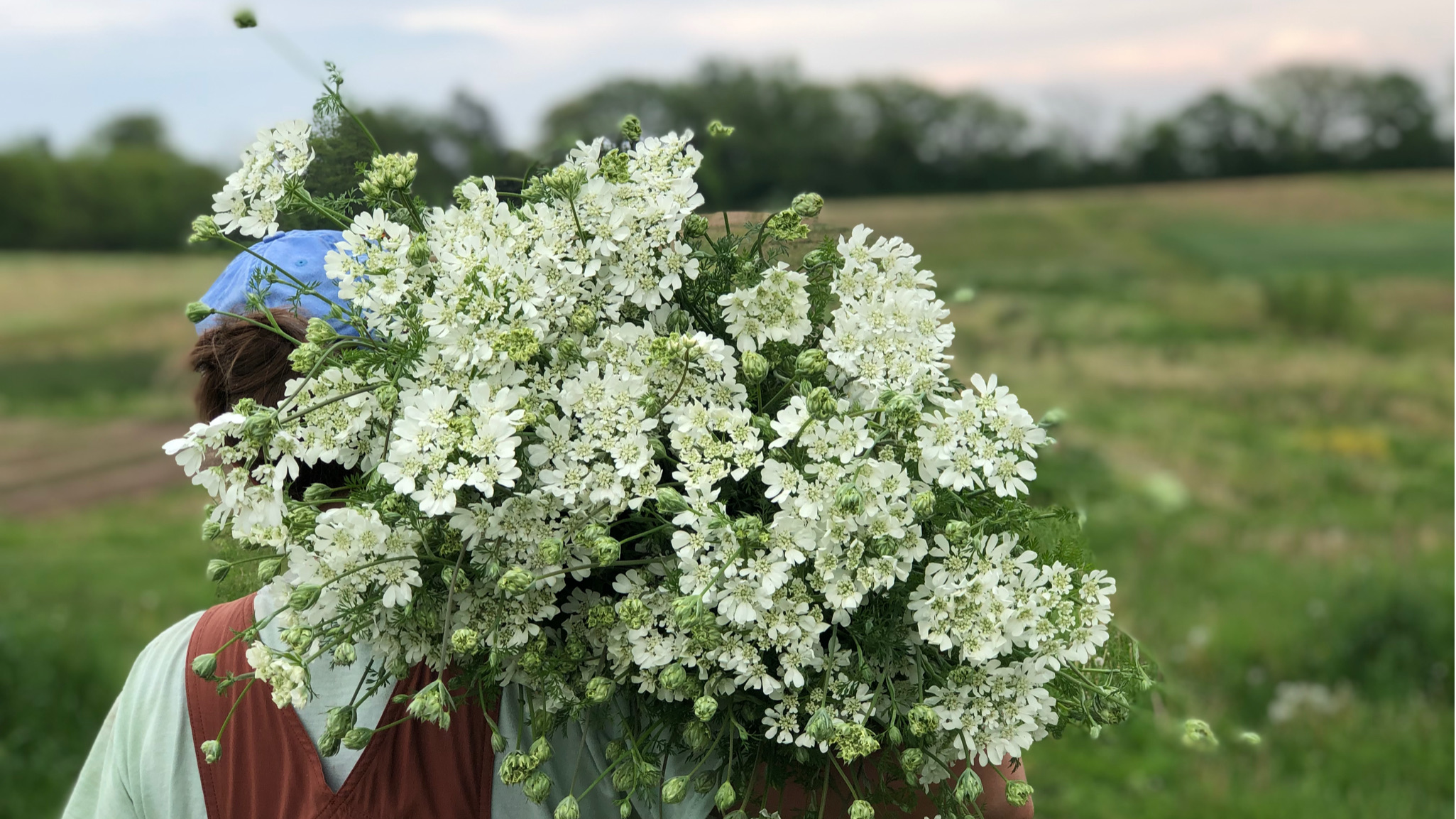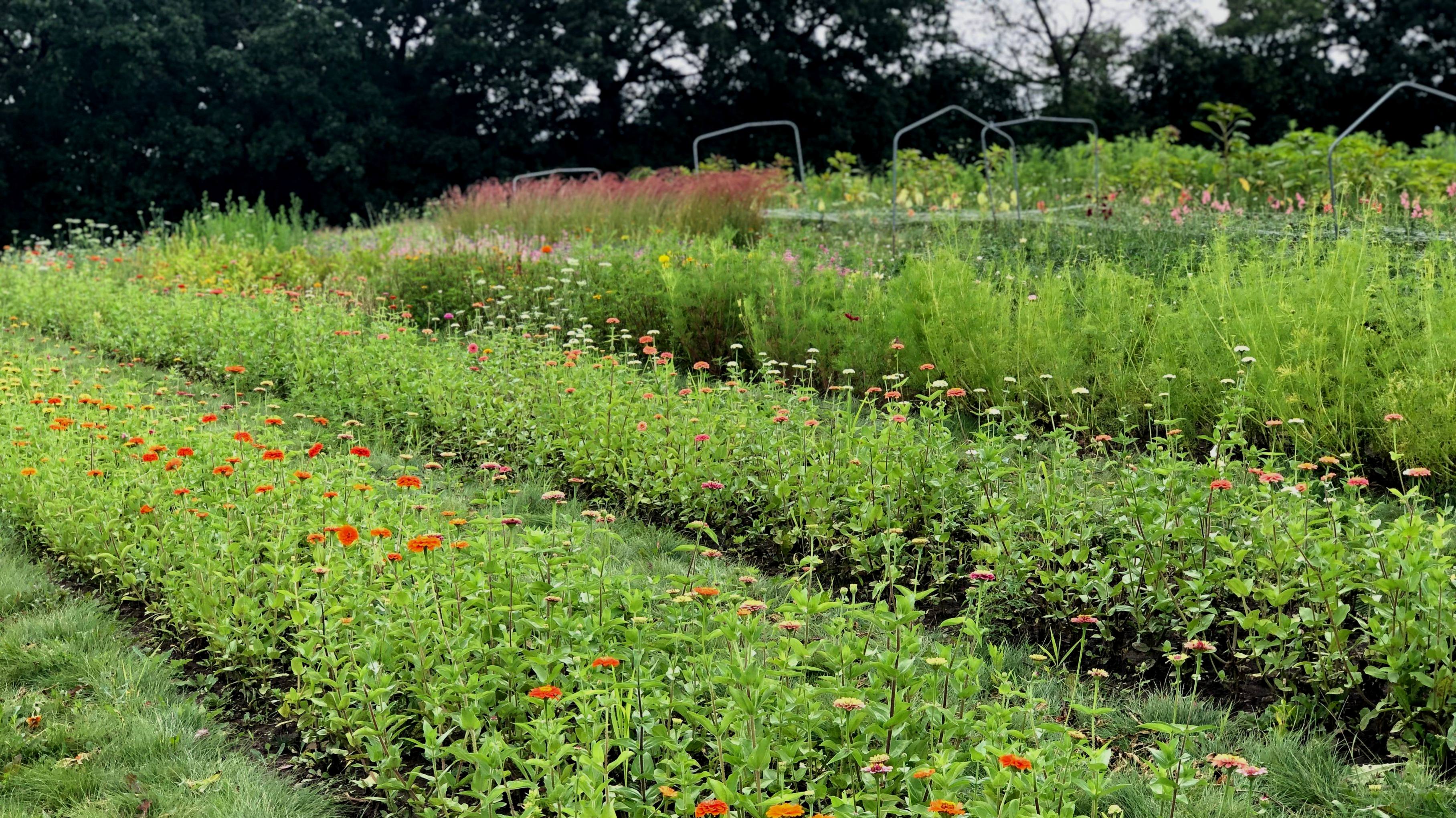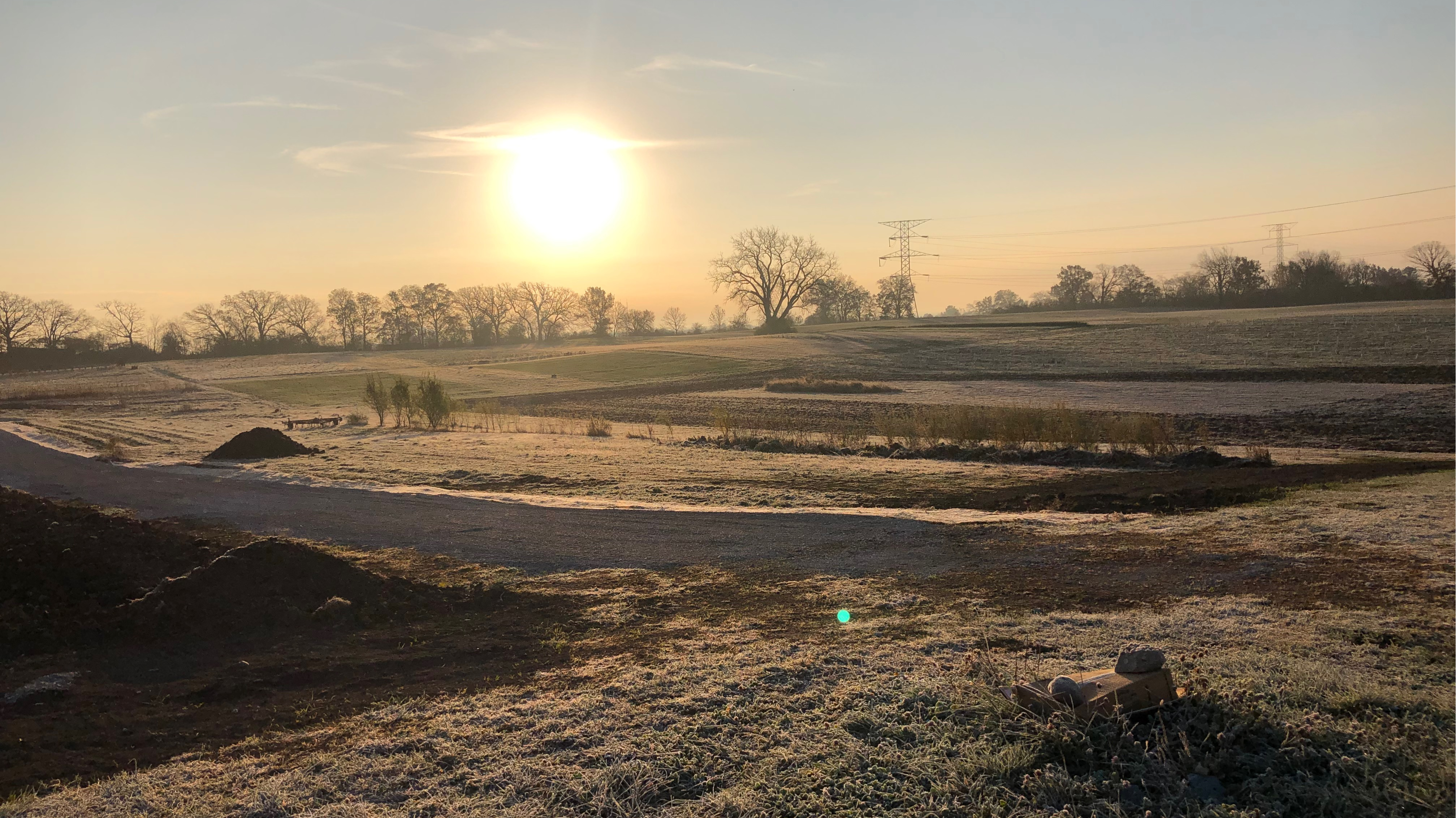Season in review—2024

2024 was our fourth growing season on this farm. Getting this soil and this land in shape for growing something other than conventional corn and soybeans has taken some time. I finally feel like this year we saw it happen. Things just clicked in a way that they had not previously.
Some of this is due in part to us actively doing things like cover cropping and NOT using synthetic fertilizers or herbicides. But some of it is just time passing, the soil getting a chance to rest, and good bugs starting to return in meaningful quantities.
The Field Report
Our first blooms of the season were tulips, which came too early and too fast. Followed by narcissus in the field and snapdragons, sweet peas, campanula, and poppies in the high tunnel. We had planned for an impressive amount of ranunculus but it got too hot too soon and they were done before they had a chance to impress us.
Our first one or two plantings of a lot of crops were missed because of the excessive rain that we had through all of May. It was just too muddy to get out in the field most days and so many of our seedlings never made it to the field. But by August the lisianthus and the zinnias were knocking our socks off! We finished the season strong with a small trial of heritage chrysanthemums. These things were absolute stunners!
All in all, we planted about a full acre of annuals and an additional half acre of perennials. We had planned for more (quite a bit more, tbh) but Mother Nature had other plans for us.

The Weather Report
2024 ended as the warmest year on record globally. Largely due to the warm winter and spring. The summer for us was not the hottest in recent years but was still hotter than it should have been.
The winter was so warm that we started freaking out that everything was happening too soon. Like a month ahead of schedule and then, around the end of April, it got cold/almost normal and started to rain. That rain just kept on coming. For all of May. Every time I thought, “If we can just get one more dry day we should be able to plant,” it would pour the next day. Sometimes we planted in less than ideal conditions and sometimes there was nothing we could do. The low spot on the farm never fully dried out all year.
The silver lining to all of this is that the rain did slow but it didn’t really stop so we didn’t have to run the irrigation very often. And the fall stayed mild and sunny so we were able to get our fall tasks done without getting cold and wet.
The Progress Report
We began the year with a pretty hefty to-do list (as we tend to do). We got a lot of it accomplished but some of it is getting bumped to 2025.
The farm is lovely with rolling hills and open views. Through a different lens I see erosion problems, water management issues, and a lack of trees, shrubs, and prairie plantings. Luckily for us I was accepted for an EQIP (Environmental Quality Incentives Program) grant a couple years ago, which is used by farmers to address issues just like this on their land.
This year the grant enabled us to:
- Plant more cover crops which are helping to improve my soil structure.
- Build an access road/driveway in our field. This was a massive project and I definitely could not have done it without some financial assistance. The issue is that the higher and flatter parts of the field are located in the back half of our property. Between that area and the barn are a couple of low spots that stay very wet with standing or running water in the spring and early summer. We can’t get back there to plant when we need to even if the ground back there is dry. So… now we can!
- Plant two and a half acres of native trees and shrubs. We planted them on the side of the hill so it will help to combat erosion in addition to providing habitat for wildlife and sucking up CO2. Hopefully it will also provide some flower farmers with a little shade to take a break in someday. Not any day soon, though. Those trees were small! But since we had to plant about 700 of them, small was fine with us.
- We did not get our two acre prairie planting in since the area where that is growing was under water most of the year.
- We also did not get our (next) high tunnel up.

The other big project on our list is laying out our field plots into a standardized system. This is not part of any program, it's just us trying to be efficient and make the work environment a little more comfortable.
We tried a few different things over the first two years and then by the end of 2023 I had a plan that I liked. We started to lay it out and utilized it on a smaller scale this year. It’s great and we’re implementing it across most of our planting area.
Everything is laid out in “blocks” that are 75 ft by 125 ft. The beds in each block are four feet wide with a low grow fescue in the walkways between. This acts as a permanent cover crop. It’s good for the soil and helps retain water. It enables us to get out in the field after a rain without sinking into the mud. And it’s a little cushion on our knees when we’re out there weeding and planting. Also it’s less area for us to cultivate every year. We do have to mow it a few times but I really think it is saving us time over all.
As of the end of the season we have 14 of these blocks laid out and with pathways planted. We have 12 more to do this year. The hardest part in coming up with this plan is that some sections of our farm just don’t comply. I kept trying to figure out how to get them to fit. What if I changed the plan a little this way or that way it would work. I finally came to peace with the fact that there is a good chunk of the farm that just does not need to comply. These areas are going to get permanent plantings of woody cut material and, what I am calling, a curated prairie.

I am just so grateful to have an amazing team on my side. Most of the crew for this year had been around for at least two seasons. It has enabled me to start focusing on some bigger picture things and feel comfortable about taking an afternoon off. The best part is that most of them will be back for 2025.
